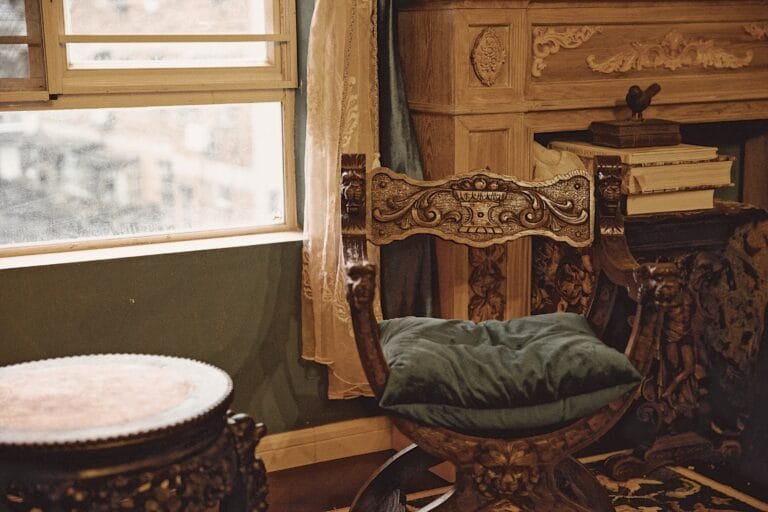FURNITURE IN ANCIENT EGYPT
Humankind has used furniture since the earliest times. However, its existence only began to leave documentary evidence with the emergence of Egyptian civilization. A number of favorable circumstance have decisively aided the survival to the present day of a rich legacy of historical traces. The favorable climate of Egypt, allied to the distinctive religious customs of its ancient civilization, whereby the tombs of the dead were appointed with their most cherished possessions (furniture, household utensils, jewelry and garments), have helped preserve such evidence, thus we now know not only the structure of their furniture but also the materials of which it was made, and its decorative paintings and hieroglyphs –which bear eloquent witness to the role of furniture in Egyptian civilization.
Ancient Egyptian furniture is characterized by a sober and highly refined style; it was distinctive in its meticulously precise assembly, impressive elegance of line and ornamental majesty. Precious materials such as gold and ivory were often used as cladding. This furniture, comfortable and masterfully crafted as it was, represented a symbol of wealth and social position. However, the homes of the Egyptian rich were sparsely furnished: pieces were scarce but exquisite, thus exemplifying the austere elegance of the Egyptians.
Three pieces are of particular relevance in Egyptian furniture: the chair, the bed and the table.There are various kinds of chair, but they can be thought of as divided into two broad groups: rigid chairs and folding chairs. Rigid chairs include armchairs and pieces with high backs resembling thrones. Both kinds are minutely decorated; their legs are joined by stretchers and crossbars in the way of reinforcement. X-shaped and scissor chairs were the finest among the folding variety, which were practical through being portable; both kinds have survived. The backs and seats are markedly concave stuffed with feathers. The legs are lathe-turned and made to resemble animal limbs.

The Egyptian bed was a simple structure: an oblong wooden frame to which was attached a mesh of ropes or leather straps covered with fabric or leather. On this structure was placed a straw-filled mattress. Such beds seldom rose higher than thirty centimeters off the floor and were remarkably narrow. Craftsmen would find inspiration in nature, such that beds suggested animal physiognomy and stood on feline-looking legs. Another remarkable element was the bed head: eschewing any sort of pillow, the Egyptians rested theirs heads on a wooden, ivory or iron headrest, occasionally lined with a linen cloth.
The tables were likewise remarkable, although their presence was less significant and their function rather vague. The Egyptian table came into being as a means to raise things off the floor, probably bowls and plates placed on low supports at mealtimes. However, tables were not as ubiquitous as they are nowadays. Their design imitated that of chairs, though the legs were not as strong as they needed nor bear the weight of full-grown men.

Also important in Egyptian culture were chests, footrests, and casks and boxes designed for storing clothes and personal belongings. Finally, one should highlight the high degree of mastery attained by Egyptian civilization in woodwork. Wood was scarce, so it had to be imported, and Egyptian craftsmen took great care to make the best use of it.
Source: Classical Furniture








